Hispano-Suiza is a Spanish and French automotive and engineering company which was creating both aero engines and luxury cars before World War II. The company's predecessor, automaker Fábrica Hispano-Suiza de Automoviles, was founded in 1898 in the heart of Spain by Mr. Emilio de la Cuadra who was later joined by Swizz engineer Marc Birkigt. Unfortunately, the newly created company went bankrupt in 1903, but the partnership itself resulted in the creation of the marque's name, carrying the legacy of the origin of the Spanish passion and capital and Swizz engineering and ingenuity.
The true beginning of the company is credited to two businessman, Mr. D. Damián Mateu and Mr. Francisco Seix, who in 1904 created the company LA HISPANO-SUIZA.
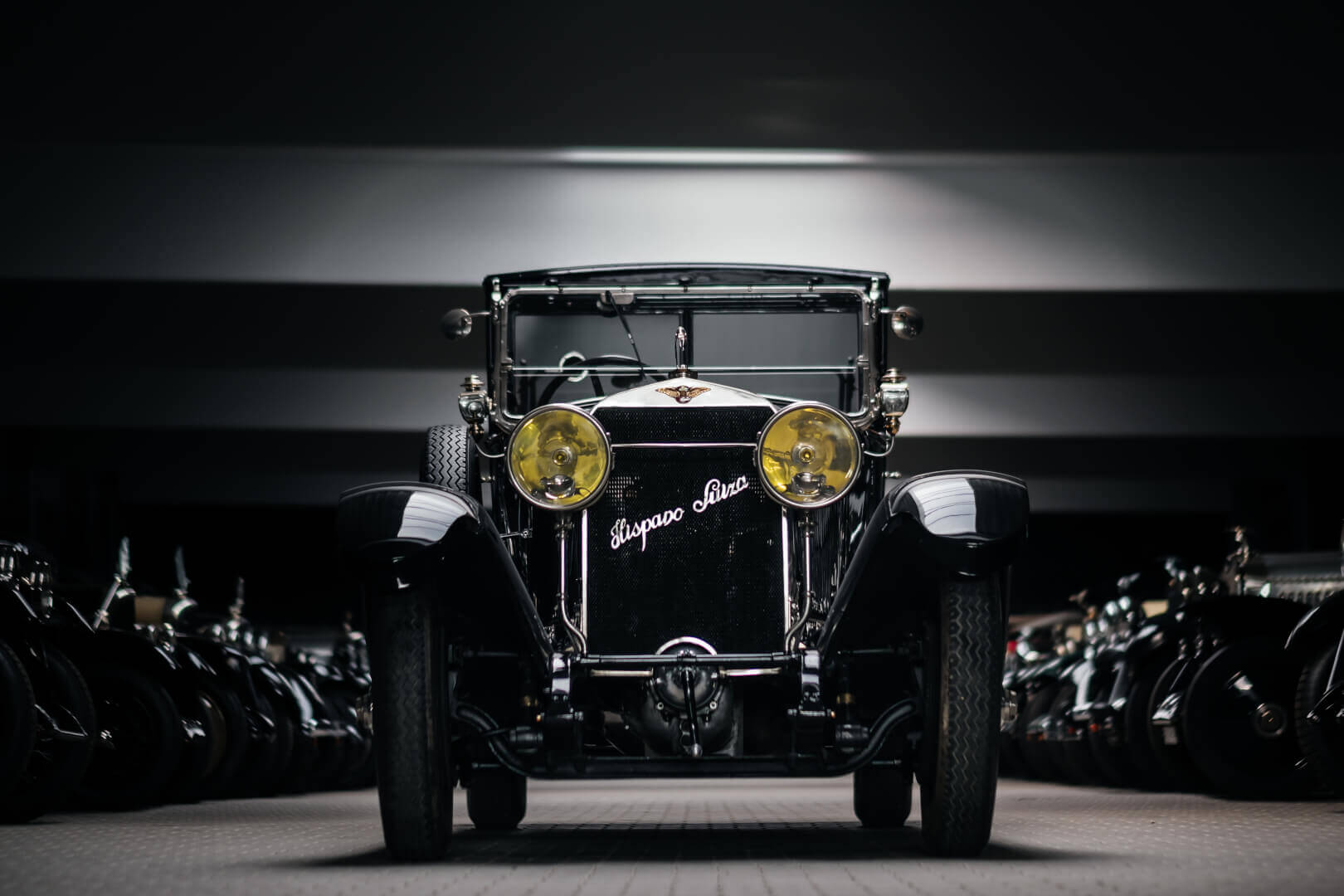
The Hispano-Suiza symbol, a proud stork, represents the two main aspects of the firm - speed and flight.
Speed refers to technically very modern and powerful cars ever since 1904, being among the fastest compared to any marques of its time. Flight refers to its superior aero engines and construction designs starting in 1913 which hugely contributed to the efforts of allied forces in the World War I to gain air dominance over the battlefields on the Western front.

Marc Birkigt proved to be a genius! His aviation designs were so new and unthought of that some of the innovations were not incorporated by Hispano-Suiza's competitors until 1920s. One of the first big innovations was his single piece of cast aluminium block as up to this point the aeroengines were traditionally built by machining and bolting together two separate steel cylinders (which were then installed in the crankcase). This helped simplify the manufacturing process while making the engine a lot lighter and more durable. Marc Birkigt can be seen as a father of cast block engines, technology used up to now. His first V8 aeroengines also incorporated OHC design and reduced the amount of gears. Later on, he came up with a hollow propeller shaft which could have accommodated a heavy calibre gun, resulting in abandoning the heavy synchronization gear and further reducing the weight. You can now start seeing what a mastermind behind Hispano-Suiza cars there was.
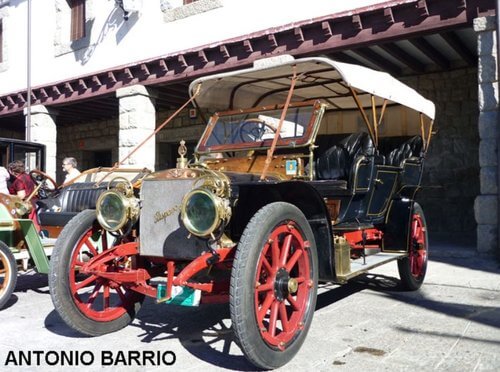
This first model to have been produced was the 4-cylinder named 14 HP. This creation featured shaped lower plates supporting the engine and gearbox assembly while protecting it from the dirt and water. This design was patented in 1905 as “armoured chassis”. Even early Hispano-Suiza vehicles used at that time highly sophisticated cardan shaft to transmit power from gearbox to the wheels while other brands commonly used simple and unreliable chain drivetrain. The 14 HP model was accompanied by the model 20 HP and later joined by 30 HP and 40 HP.
In 1907 the company releases first Spanish 6-cylinder car, model 60-75. This variant had displacement of more than 11 liters and introduced the technology of central pressurized lubrication. Unfortunately, this model was not commercially what you would call “success”. Together with dissatisfying economic results of the firm and the overall economic situation on the market, Damian Mateu decided to manufacture a more modest car to attract broader segments of the clientele. This resulted in developing and manufacturing of model 12-15 HP.

The 12-15 HP model meant rationalization of manufacturing using known techniques and simplifying them even more. This car featured only one camshaft and no fuel pump, as the carburettor was instead fed by gravity using elevated tank. This model was a huge commercial success.

Marc Birkigt's next evolution was model 15-20 HP which adopted philosophy of increasing RPM and compression and thus achieving higher power with almost the same displacement. Higher RPM also contributed to additional improvements in lubrication. The model was introduced in 1909 and stayed in production until 1915. In 1909 Hispano-Suiza also introduced the model 30-40 HP which was often used as a foundation for buses.
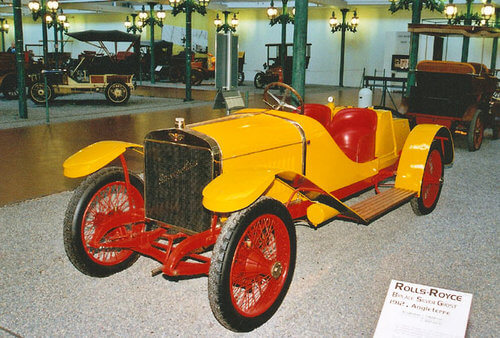
Up to this point, Hispano-Suiza is still pretty much a Spanish-only marque mostly unknown abroad. The first model that partly changes the pace of the company here is the model 15-45 HP also known as Alfonso XIII. It is first shown in 1909. This design went through several updates throughout its life, mainly enlarging the engine. The name this model possesses came from the impression it left on mind of the monarch who later gave Hispano-Suiza permission to use his name. The king supposedly had at least three different 15-45 HP cars as they evolved. The car itself had many racing achievements mainly because of the engine but also because of the brilliant weight distribution that came from the engine pushed way back behind the front wheels. The 15-45 HP further featured an air pump in the engine compartment which pushed air into the fuel tank, and it was the only model from the marque to be fitted with Hispano -Suiza's own carburetor. Chassis was offered in three length types. Generally, this car was very likely the most sophisticated car of its era.
In 1910 the company's leaders decided to open a new factory outside of Spain, mainly to diversify the risks that arose within the Spanish economy. France was the best choice. A wealthy country with a world leading car industry and a huge market, country with a very skilled labor and ever since 1909 increasing demand for Hispano-Suiza vehicles. In 1911 a new subsidiary was created and later that year the factory itself got opened. This factory continues to make models which were already in production in Spain. It was later in the 10s when the French subsidiary started focusing on the more luxury and prominent models as it was economically rational due to the economic reality of the era. The French factory becomes later a separated unit with French owning around 50% of the company due to the development in France after the war.
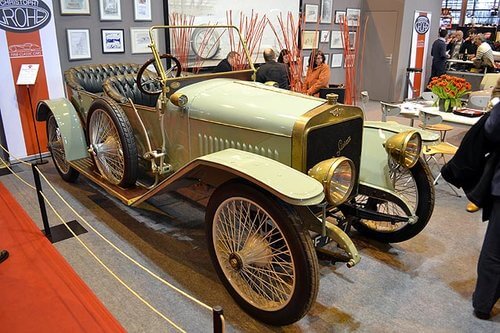
It is in this French factory, when the World War I breaks out, where Marc Birkigt offers his service to design the famous aero engines. The factory fulfils the needed demand for war effort, but it is not enough. The engines following Birkigt's design are also built in more than 20 other factories on the allied side. Many tens of thousands of engines of his design were built. It is said that this help made the marque Hispano-Suiza very favorable after war among the clientele as it became seen as a national brand and it was prestige to have one of their products. This helped the company to succeed even with the ever increasing competition from the German and British car makers.
Having the original factory in Spain and the fact that Spain was a neutral country during the World War I, the production even though reduced remained going. The company was able to introduce new model in 1914, the Type 24, and manufacture throughout the war. Type 24 was an evolution of older model 12-15 HP, it had 10% smaller engine displacement and yet reached about 50% more power. The company offered an inhouse coachwork altough one could order a bare chassis as well. Type 24 could be compared to the famous Ford T that was about 30% cheaper but dramatically worse build quality and a lot less powerful.
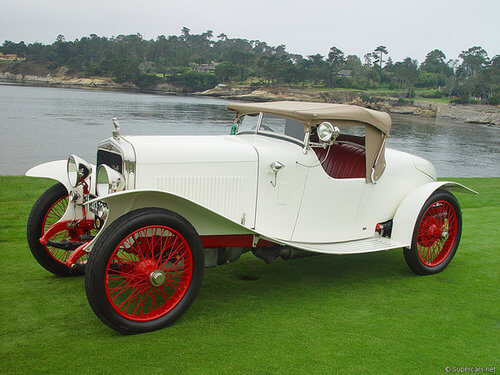
The car which was originally designed to be built in France, but did not get the opportunity, was the Type 26. This model was an evolution of the Alfonso XIII model with further improvements of the engine. The model featured one camshaft with 16 valves and T-engine design. Some 56 pieces were eventually built in Spain but with no great success. It is believed that only one car survived and was showed at Pebble Beach in 2003.
After war, in 1919, the emblem, flying stork, got accommodated within the brand's marketing identity. The symbol comes from French aviator George Guynemer, whose squad wore this symbol during World War I. Before being shot down in 1917 Guynemer won 54 air battles being one of the most significant war pilots of its era. He used airplane with Hispano-Suiza engine.
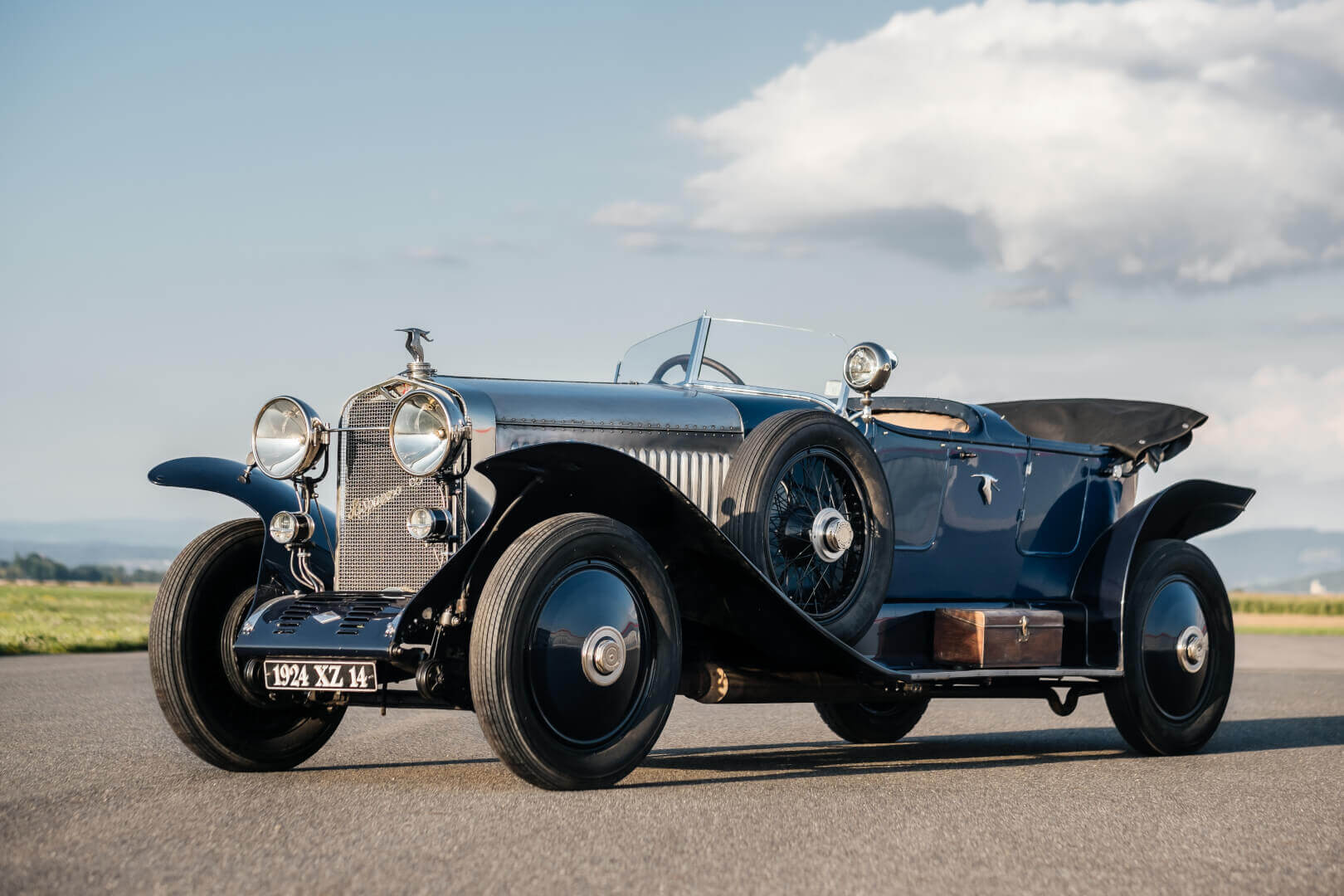
In the same year the most significant design is introduced. The 6.6 litre straight six engine on a brand new chassis called Type 46. The model was known as the 32 CV but generally called the H6. This model was introduced at the Paris Motor Show and brought a lot of attention. It featured very innovative and at the time unknown brake booster applied to all wheels! A very appreciated safety feature. The patent for this feature was later bought by Rolls-Royce for its Silver Ghost models. With some minor modifications to the suspension and battery management the H6 was in 1922 renamed to H6B. Later, a version H6C with its bigger engine completed the line-up.
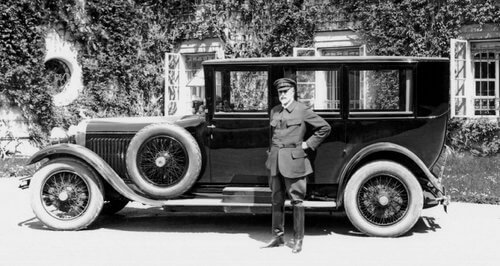
This model also left its footprint in the Czech Republic and influenced ith automotive industry. Czech company Škoda bought the license to manufacture the H6B model in 1925. At first, Skoda only assembled parts that were delivered from France, but in 1926 they managed to manufacture all of the parts on their own to create, in Czech Republic famous, Škoda Hispano-Suiza, naming the model 25/100 PS. Interestingly, the build quality of the chassis and the engine was considered the same or even better than its French counterpart. There were only 100 chassis made of which 39 stayed in Czech Republic. The first Czech made Škoda Hispano-Suiza was bought by the first Czech President Tomáš Garrigue Masaryk for astronomical 8.000 Euro in 1926 money!
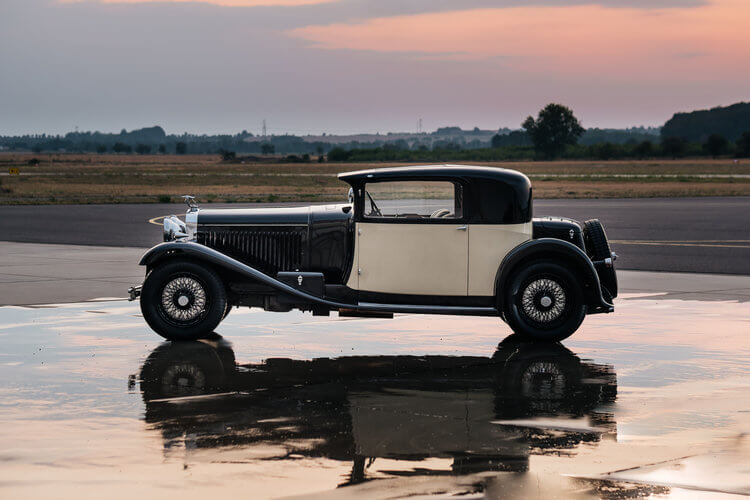
The H6C, using the manufacturing notation - Type 56 or 46 CV, possessed a larger 8 liter engine. The engine was by design means the same as the smaller H6B one, the only difference was the increased piston bore by 10 mm. The chassis for both H6s were the same. The H6C started its life as a racing special based on the H6 model, later H6B model and thus is also known as the Bolougne model. The Bolougne had a shorter chassis than that of regular H6 car. There is this famous story of 1928 race in Indianapolis, US between the Hispano-Suiza Bolougne type and American 5 litre straight eight Stutz Black Hawk. The story begins with a statement from Frederic E. Moskovics stating no European car can beat Stutz Black Hawk on a track. Charles T. Weymann, financial defender of Hispano-Suiza, asked Mr. Moskovics how much would he bet on Stutz. Mr. Moskvics confidently suggested 5.000 Pounds Sterling. And the bet was on. According to the story, Hispano-Suiza was faster from the very beginning and it also proven to be reliable while the Stutz had difficulties regarding its engine and, therefore, it could not keep up with its European competitor. There was also a second match between the two which was won by the Stutz, leaving many commentators speculating about a possibility that Mr. Weyman let Stutz win to keep the business partnership between Mr. Moskovics and him positive. Nonetheless, this race gained Hispano-Suiza a very good reputation in the United States.
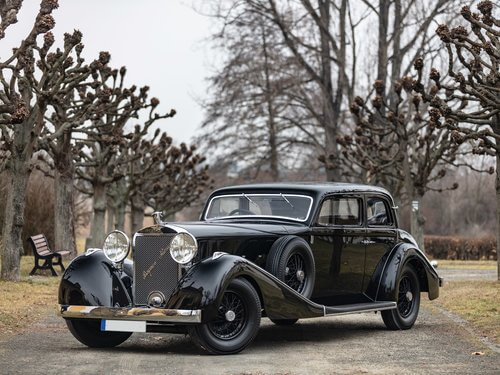
The engine design was by 1928 pretty much an 8-year-old concept with even older pre-war roots and the company wanted to continue with bringing new ideas on the table. That is why Hispano-Suiza introduced in 1929 the Type 56 Bis at Universal Exhibitions of Barcelona and Seville. It featured sleeves with wet liners and firstly used the process of nitriding of crankshaft for better properties. It is a fact that the T-56 Bis or H6C Bis is the peak of production when talking about the line of luxury models made by Spanish factories. No other better model has been produced in Spain until the latest Hispano-Suiza revival attempts.
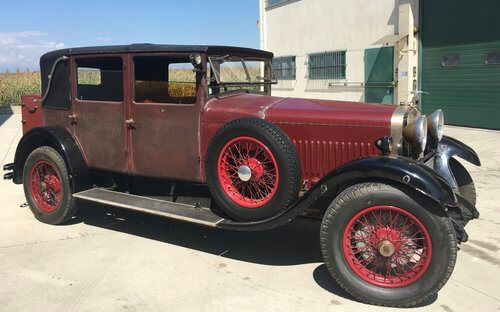
Type 49 was another model of importance, introduced in 1924. This model is based on the H6/Type 46 which was produced in France but had been revised and rationalised for the not so developed Spanish market. The engine was very similar to the H6 one, but used block made of cast iron and used removable stock together with overall simplified chassis. Type 49 also had its own smaller brother named Type 48 which used smaller, 4-cylinder engine. The smaller model was a missing piece in Hispano-Suiza’s line-up and the development was motivated by winning a public tender for production of automobiles for the government. Very unlikely to be seen today, winning a tender with product that does not yet exist. The Type 48 was also shorter than the H6 so the final cars look very modest compared to H6.
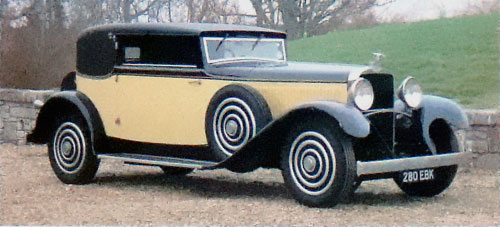
Another car of great importance is Type 64 which was meant to be produced only in Spain. The reason behind this car is that there were no big passenger cars being produced in Spain and the luxurious H6 sold well in Spain despite being imported. The Type 49 was not so well adopted by the Spanish market. Hispano-Suiza, therefore, put this less luxurious but still spacious concept aimed to satisfy the Spanish market on a paper to set for a production of another model.
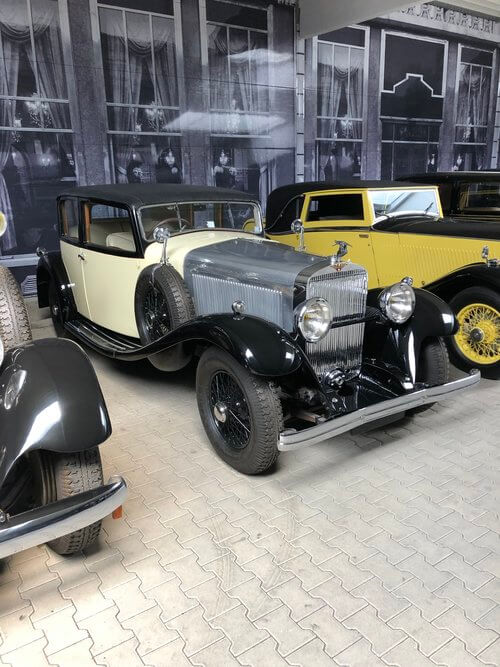
Marc Birkigt experimented with a new 4.5-liter engine on the Type 49 chassis and when the board was persuaded, it got modified and named Type 64. Only few vehicles were built when it was decided to sell the manufacturing licence to a French company called Ballot. This small company had plenty of experience with building cars but was in financial trouble. After buying the license the original Type 64 received many improvements from Ballot engineers, thus being modernized. This improved Type 64 had been commercially known as Ballot HS-26. The whole situation led to coexistence of both the Spanish original Type 64 and the newly modernized French Ballot. Buying thel icence, however, did not solve Ballot's problems and eventually the company was absorbed by Hispano-Suiza. This led to change in the name of this improved Type 64 from Ballot HS-26 to Hispano-Suiza Junior and absorbing the Ballot improvements to manufacturing process back to Spain, unifying the Type 64 in 1931 again.
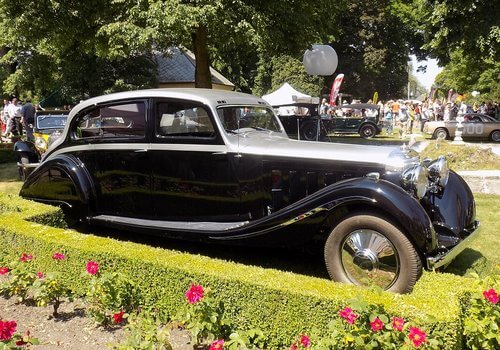
In 1931 Hispano-Suiza introduced the all mighty model J12 again using the company notation named Type 68. The model was first presented at the Paris Motor Show in 1931. This great peak of Hispano-Suiza's production used a very light alloy V12 engine of 9.4-liter displacement. This new top of the line model featured amazing things like comfortable suspension that could be regulated from driver's seat. It easily exceeded speeds over 170 km/h and ran unusually smoothly. There were 3 lengths of chassis available. There was also a revised model called Type 68 bis which received an even larger engine based on the original J12 V12, now with displacement of 11.3 liters. This engine came into existence because of the contract which Hispano-Suiza got with the French railways for delivering fast trains. This new engine produced 250 hp at 3.000 rpm and almost linear torque from 1.000 rpm. The final product was a train with two of these engines capable of pulling 3 large wagons. There were only about 12 cars with the new larger bis engine made while there were about 110 J12 with the original engine created.

The last two important vehicles are the Type 60 and Type K6. The former was the only Hispano-Suiza manufactured with driver’s seat on the left. The designer behind this car was Czech engineer Burdín from Škoda. The design of the car was totally new and featured valves driven by pushers and rockers, the engine was 3.0-liter straight 6 cylinders.

Model K6 (or Type 70) was a successor to the H6B/H6C and HS-26 Junior, being introduced in 1934 and was the last model to have been designed by Marc Birkigt himself. Its engine is derived from the huge J12, basically the engine cut in half. The 5-liter straight 6 was large enough to push the car to the maximum speed of 135 km/h. This model was in production only for 2 years. The sudden death of Damián Mateu, The Spanish Civil War and World War II led to the company's devastation and it did not recover after.
© HISPANO-SUIZA AND CLASSIC CLUB. All Rights Reserved.
Created by Tomáš Folprecht
